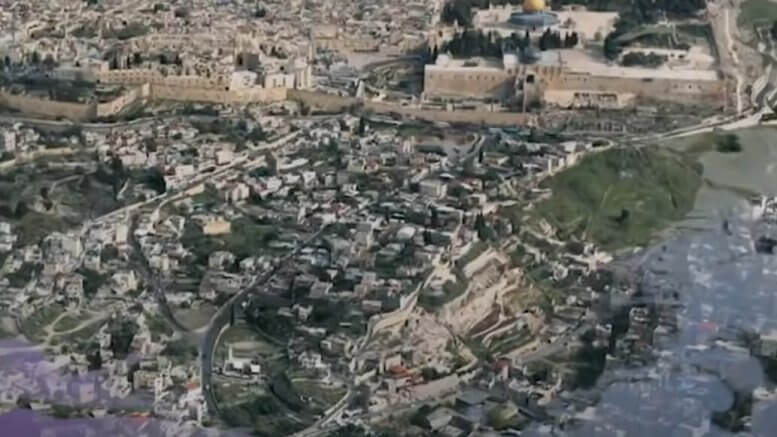Playback speed:
Rediscovered Beneath a Burst Pipe
In 2004, a routine water pipe repair in Jerusalem’s ancient City of David led to an extraordinary archaeological discovery. Beneath a quiet garden just south of the Old City, workers uncovered a wide flight of ancient stone steps. What they found was the southern edge of the Pool of Siloam—a vast mikveh used by Jewish pilgrims 2,000 years ago to purify themselves before ascending to the Temple Mount.
Further digging revealed something even more astonishing: a massive paved road stretching uphill toward the Temple, dating back to the time of Pontius Pilate. This road, known now as the Pilgrimage Road, is the very path walked by Jewish worshipers—and almost certainly by Jesus Himself—during the feasts of Passover, Pentecost, and Tabernacles.
From the Pool of Siloam to the House of God
The Pilgrimage Road begins at the Pool of Siloam, a site made famous in John 9, where Jesus healed a man born blind. Archaeologists have now confirmed that this was not only a biblical site, but also a massive purification center capable of handling thousands of pilgrims during major feast days.
Once purified, the pilgrims would begin their spiritual and physical ascent. The road stretches 600 yards uphill, connecting the Pool to the Temple Mount. Along the way, pilgrims would walk between homes and shops that lined the route. According to Jewish law, residents of Jerusalem were expected to offer food, water, and lodging to the visiting faithful.
“This is one place where I can say with 100% certainty—Jesus walked here.”
The road’s width—roughly 12 to 13 yards—confirms it was designed to accommodate multitudes. The Hebrew term for this journey, Ma’alot Regel, literally means “going up by foot.” And it was no metaphor. The incline is real. So was the awe.
In our next post, we will explore how Psalm 119 mirrors this pilgrimage—not in stone, but in spirit. Each Hebrew letter may mark a step on the journey of the heart.
The Architecture of Devotion
The road’s stones remain remarkably well-preserved. That’s partly because they were buried under centuries of debris and only recently uncovered. The steps are intentionally uneven—some long, others short—forcing pilgrims to walk mindfully, not in haste. As one guide explained, “Pilgrimage is not a race. It’s a sacred act.”
Underneath the road, a drainage tunnel ran the full length of the route. Incredibly, it was in this hidden tunnel that archaeologists found the most haunting relics: cooking pots, oil lamps, and coins minted by Jewish rebels during the Roman siege of 70 A.D.
One coin bore the words: “For the Freedom of Zion – Year 3”—a powerful symbol of Jewish resistance during the Great Revolt. These artifacts are not just historical; they are emotional. They testify to the desperation and faith of Jerusalem’s final defenders.
The Final Ascent and the Fall of a City
Josephus, the first-century historian, wrote that the road flowed with blood when Titus and the Roman legions destroyed the city. The Temple was burned, the people slaughtered, and the Jewish presence in Jerusalem was erased for nearly 2,000 years.
Yet these stones remained.
Today, you can walk on the same path. The City of David Foundation, along with Israeli archaeologists, has made much of the Pilgrimage Road accessible to visitors. Eventually, the full route—from the Pool of Siloam all the way to the Western Wall—will be open.
“When you’re in the place where the Bible happened, the words of the Bible come to life.”
Faith That Stands on Stone
For skeptics, the Pilgrimage Road is a challenge. It was hidden for centuries, yet exactly where the Bible said it would be. It connects the dots—from David’s city, to Hezekiah’s tunnel, to Jesus’ miracle, to the Temple Mount itself.
This is not myth. This is not metaphor. This is fact.
And for believers, it’s more than a site—it’s a reminder: our faith is not built on fables. It’s built on stone, on testimony, and ultimately on the Person who walked this road, healed the blind, and gave His life at the end of that uphill journey.
Let the stones speak. They are crying out.

